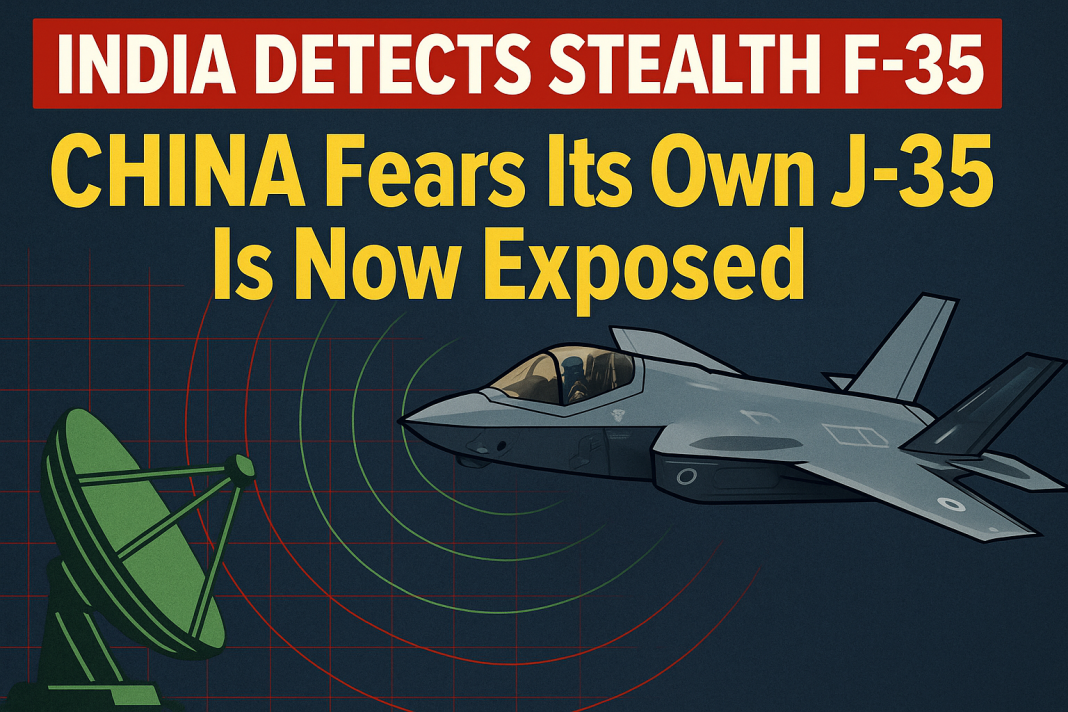In a stunning moment for global defence watchers, the Indian Air Force (IAF) quietly pulled off what few believed possible: it detected and identified a Royal Navy F-35B stealth fighter jet—one of the most radar-evading aircraft in existence.
🇮🇳 India’s Air Surveillance Breakthrough Raises Global Eyebrows
The incident unfolded when the British jet, operating from the aircraft carrier HMS Prince of Wales, made an emergency landing at Thiruvananthapuram International Airport after reporting low fuel. While the emergency was managed smoothly, what caught the world’s attention was how India’s air defence system spotted the jet designed to go unseen.
The F-35B, developed by Lockheed Martin, uses low-observable technology, radar-absorbent materials, and advanced sensors to fly undetected in hostile airspace. Yet, it was picked up and tracked by India’s Integrated Air Command and Control System (IACCS)—a layered network of radars, sensors, and real-time data nodes across the country.
IAF officials confirmed the detection and said support was extended for the safe recovery and return of the aircraft. However, the event’s significance goes well beyond the landing strip. It’s a bold new chapter in India’s technological credibility and a wake-up call for stealth-dependent adversaries.
🛰️ What It Means: Cracking the Stealth Code
The question echoing across military corridors is straightforward but staggering: Has India cracked the stealth code?
The Day Stealth Died: Iran Becomes First Country to Destroy F-35 Jets in Active Combat
The F-35B is not a routine aircraft. It’s a fifth-generation stealth fighter, engineered to dodge conventional radar and fly missions deep into enemy territory. Countries like China (with its J-20 fighter) and Pakistan (reportedly acquiring J-35Ajets from China) rely heavily on stealth-based air dominance to shift battlefield advantage.
But India’s ability to detect the F-35B, even in an emergency, signals the growing depth and sophistication of its defence capabilities. It didn’t happen by luck. It’s the result of years of radar research, electronic warfare systems, and real-time airspace monitoring.
In a statement issued via social media, the IAF clarified that the F-35B was operating just outside Indian ADIZ (Air Defence Identification Zone) and had identified Thiruvananthapuram as its designated emergency diversion site. Yet, before the aircraft even arrived, Indian systems had already tracked, identified, and cleared it.
This wasn’t just an emergency—it was a live test of India’s stealth-detection capability, and India passed.
🔭 India’s Indigenous Defence Push: The Kusha Factor
The stealth detection coup comes at a time when India is fast-tracking its indigenous air defence systems. At the forefront of this mission is Project Kusha, a long-range surface-to-air missile (SAM) platform being built by DRDO and Bharat Electronics Limited (BEL).
Fuel Tanks That Vanish? Israeli F-35I Adir Carried the Secret That Changed the Combat Gam
Kusha aims to match the capability of elite global systems like the Russian S-400, which India already operates. It will use multi-layered radar and command systems to intercept aerial threats across vast distances.
In parallel, the IAF is deploying:
- 🔹 QRSAM (Quick Reaction Surface-to-Air Missile)
- 🔹 Akashteer, a digital command system that fuses radar and weapons data in real time
- 🔹 Operational S-400 batteries across sensitive zones
These systems create an umbrella of protection that can neutralize drones, fighter jets, cruise missiles, and now—possibly even stealth aircraft.
The detection of the F-35B has likely given a morale boost to India’s research agencies. While the government has not officially claimed to have defeated stealth technology, the evidence is hard to ignore.
What began as a routine diversion became a moment of quiet triumph for India’s scientific and defence communities.
✈️ Global Reaction: Strategic Signals Beyond South Asia
This development won’t go unnoticed in Beijing or Islamabad.
China, despite investing billions in stealth programs like the J-20, now knows India has counter-stealth measures that are credible and operational. For Pakistan, which relies heavily on Chinese support for advanced aviation tech, this is deeply concerning.
Vishnu Hypersonic Missiles: India’s Answer to China’s Arsenal
Even among NATO allies, the event highlights India’s maturity in handling critical airspace challenges with transparency and technical confidence.
Defence analysts across Europe and Asia are calling it “a soft power projection with hard-edged capability.” The radar didn’t just track a jet—it sent a message: India is watching, and India is ready.
🧠 Final Take: In a world obsessed with going invisible, India just proved it can still see.
If you’re an adversary relying on stealth, it may be time to rethink your strategy.

